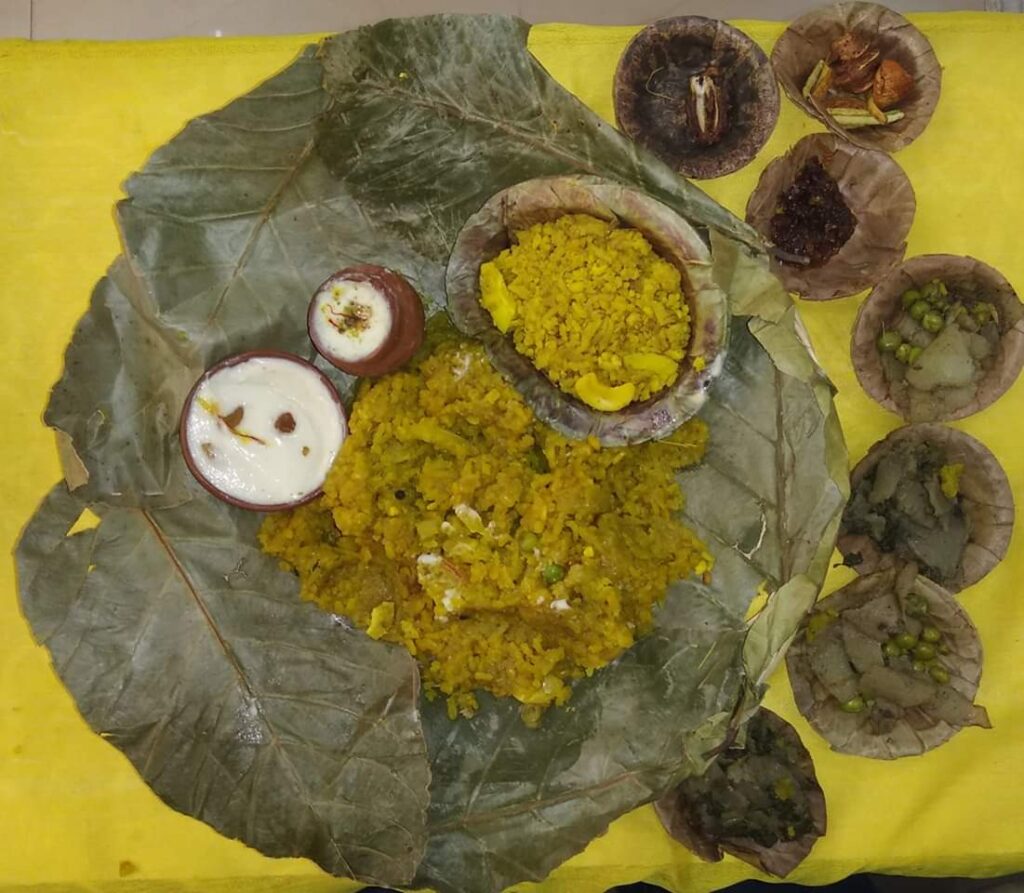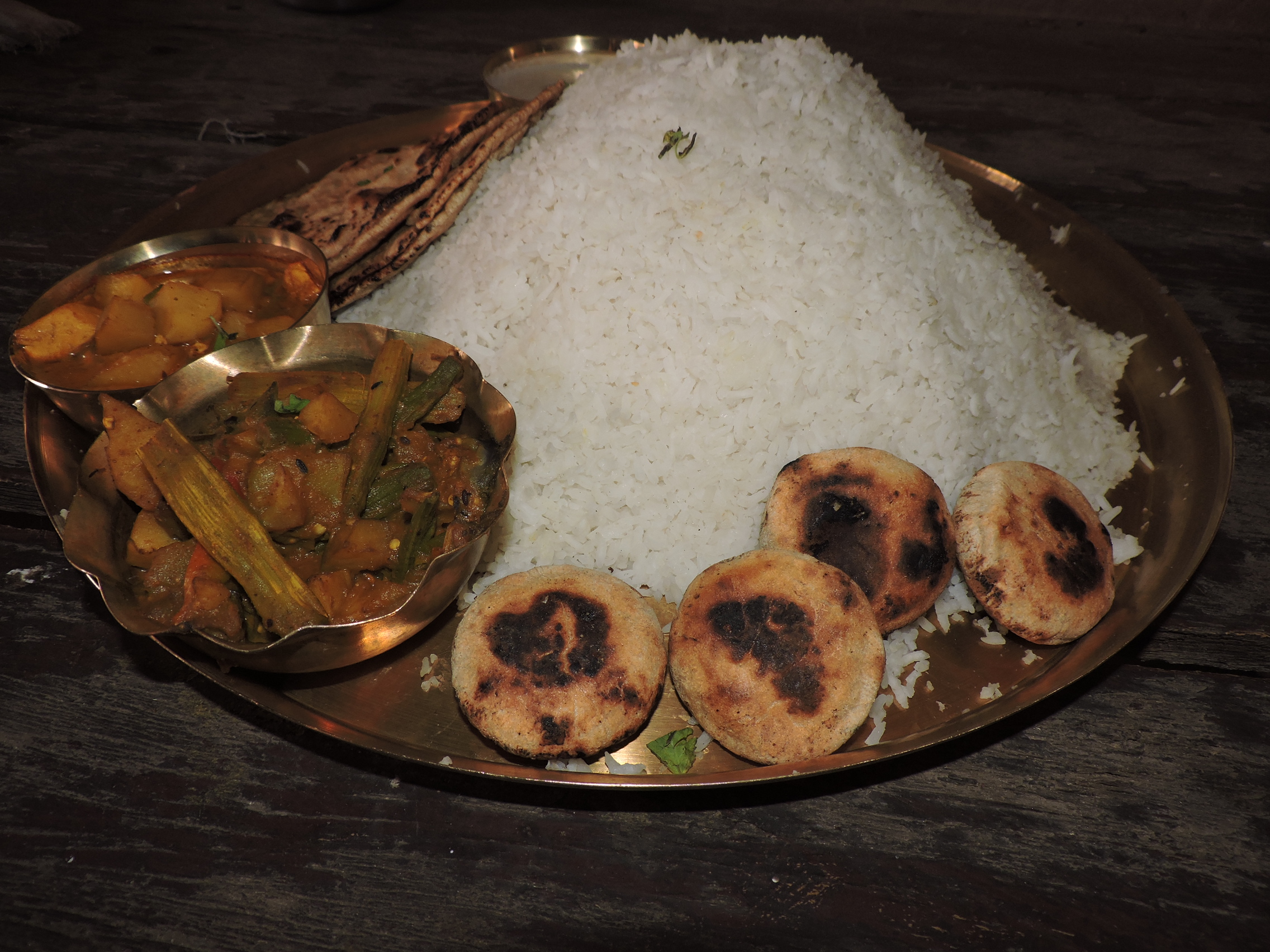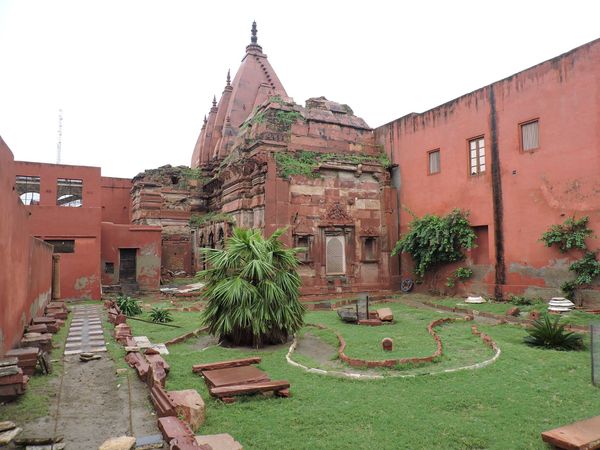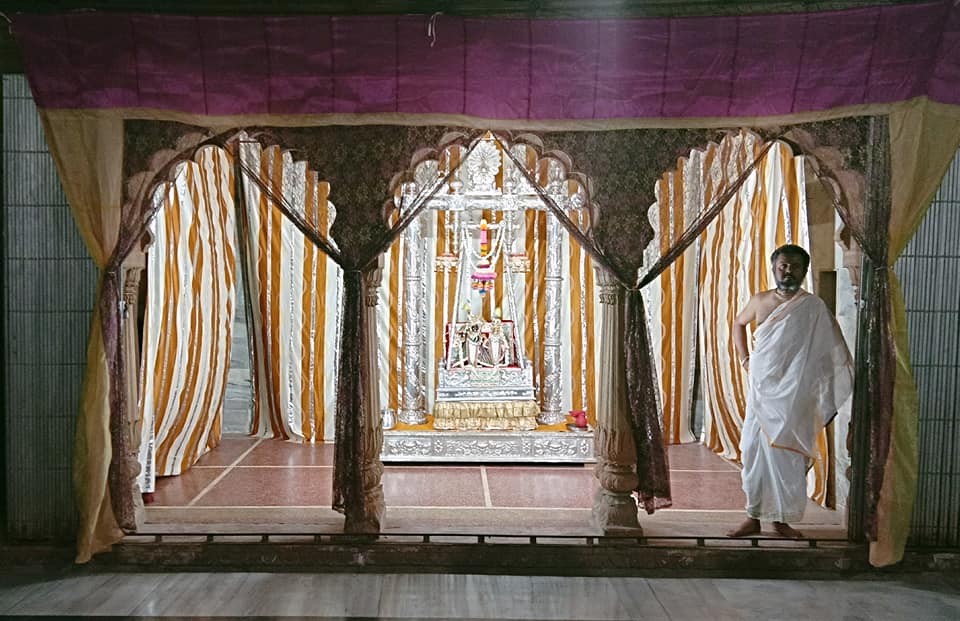- By Rajesh Sharma
The relation between pilgrimages and ‘prasad’ in India is timeless. The vibrant synthesis of these two aspects of faith in the divine has been an inextricable part of Indian culture. Devotees consider their pilgrimage incomplete without the blessing of ‘prasad’. However, this tradition was not established overnight; it is the result of the prolonged and severe austerities practiced by the great saints.
In Braj, ‘prasad’ essentially refers to the third stage of the food prepared in temple kitchens. Every preparation has to journey from the kitchen to the deity and lastly, to the devotees. During each of these stages it is addressed by different names: ‘Amaniya’ during preparation, ‘Bhog’, when it being offered to the deity, and after being blessed by Thakurji, it comes to the devotee as ‘prasad’.

To understand this delectable tradition which originates in faith, one has to dive deep into the local culture. In fact, it is no exaggeration to compare the temple kitchens of Braj to universities when it comes to the art of cooking.
Like the ‘pothikhana’ (temple library), ‘jagmohan’ (balcony-like area for the deity), ‘phool ghar’ (flower room) and ‘bhandar’ (storehouse), temple kitchens form a distinct section where there’s never a dull moment! Beginning with the early morning ‘mangla’, to afternoon ‘rajbhog’ (main meal), ‘jagaavno’ (evening snack) and ending at ‘vyaaru’ (last meal of the day), they keep bustling all day long.
Further, an assortment of ‘bhog’ ranging from Kaccha Prasad (regular meals), to ‘annakoot’ (spiced mixture of grains and veggies), ‘chappan bhog’ (an offering of 56 different kinds of delicacies) and ‘kunwaras’ (an ‘annakoot’-like tradition followed by the Vallabh Kul Sampradaya), is offered to Shriji in temples of Braj.

Braj-Vrindavan as a celebration of ‘prasad’
Braj’s rich gastronomic heritage of over 500 years has found its highest expression in the tradition of ‘prasad’. Unique specialities of many temple kitchens have been preserved and handed down over generations.
Some of the most well-known culinary traditions that started off as an expression of loving devotional service for the ‘Ishta-devatas’ include Radharaman’s ‘kuliya’ (a sweet preparation of thickened milk), Banke Bihari’s ‘doodh-bhaat’ (sweet made with milk, rice and fresh cream), Tatiya Sthaan’s ‘arai’ (a fermented colocasia delicacy made with clarified butter and buttermilk), Radhavallabh’s Khichri (made with rice and lentil), Rasik Bihari’s ‘chandiya’ (a green gram dish), Dwarkadhish’s ‘tenti’ (Karira berries), Govinda Dev’s Kachauri, Gopinath’s Laddoo, Madan Mohan’s baati (salt free, baked bread ball), Mahavan’s ‘kheermohan’ (Indian rice pudding) and Mathura’s ‘peda’ (type of Indian dessert).
‘Prasad’ in literature, music and tradition
From the 16th century onwards, the tradition of ‘prasad’ was blended with the literature, music and festivals in a manner that has made the temple kitchens of Braj thriving centres of culinary art and science. Outside of the kitchens, one can experience the custom as a seamlessly interwoven element of written and oral culture.
It will be erroneous to consider this highly developed and all-encompassing ritual as being about cooking, eating and taste alone. In Braj, ‘prasad’ is not just eaten; it is written, sung and celebrated since time immemorial. Many temple recipes found their way to the present times through ancient manuscripts as well as enduring songs and stories.
‘Prasad’ in written and oral culture
Written records of ‘prasad’ can be found in the manuscripts preserved at Vrindavan Reserach Institute, various branches of Rajasthan Oriental Research Institute and Society for Promotion of Nagari, archives of various princely states, private collection of intellectuals and historians, and in foreign libraries.
One can also experience this living heritage in the form of ‘padavalis’ (collection of short verses) that are sung in temples. They are rich in descriptions of ‘annakoot’, ‘kunwara’, ‘mangla’, ‘rajbhog’, ‘shayan’ and other rituals associated with ‘prasad’.
The credit for making this valuable treasure available to successive generations in Brajbhasha goes to the various Vaishnav Sampradayas (sects) of Braj, prominent among them being Vallabh, Nimbark, Gaudiya, Radhavallabh, Haridasi, Lalit, and Charandasi.
In the last 450 years umpteen recipes have been given poetic expressions, and thus names that were difficult to even pronounce, have been rendered effortlessly hummable. This is one of the most valuable and unique contributions of Braj to Indian culture.





